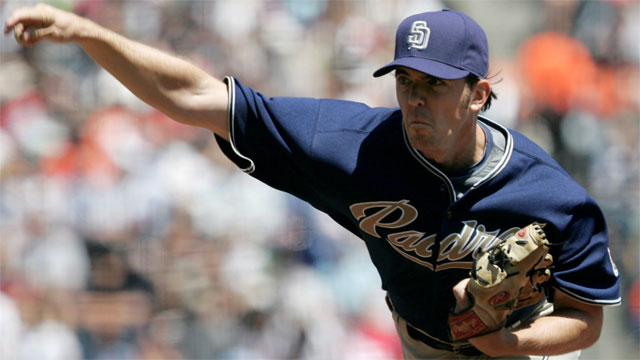My entire baseball career is built on a lie.
It started just after my junior year, on the day I wasn’t drafted but was told I would be.
I spent 2002 playing ace to my college staff, leading the squad to a regional bid, making the all-conference all-star team for my effort. My fastball sat in the low-90s, I struck out hitters in bunches, and ate up innings in big gulps.
A Cleveland Indians scout said I should expect to go in the top 10 rounds. You can’t imagine what that was like to hear. Me, a stupid kid, never had a paycheque bigger than $300, told I’d get drafted to play my dream and probably make a $100,000 or so in the process. Surreal.
The day of the draft I sat in my room, on the floor, surrounded by dirty clothes, useless textbooks and dorm room furniture. The only thing I’d bothered to unpack was my phone, which I held, waiting for it to ring.
The call never came.
I thought there had been a mistake. I had no reason to doubt my sources. Besides, I was one of the best in my conference and the best are supposed to get drafted, right? Turns out that was just another naive belief, one of many I had about the professional baseball world.
That 2002 draft day taught me a valuable lesson: Baseball is cruel. It will tell you one thing and do another. And if you want to make the most out of your time in it, you have to be willing to do the same thing.
 Programming alert: Catch coverage of the MLB Draft on Sportsnet ONE at 7 p.m. Thursday | TV schedule
Programming alert: Catch coverage of the MLB Draft on Sportsnet ONE at 7 p.m. Thursday | TV schedule
I came into my 2003 season angry. I wanted answers for why I didn’t get drafted, but even more so, I wanted answers for why I was told to think I’d get drafted, and drafted high, when I wasn’t on anyone’s radar.
But scouts aren’t very definitive about things like why your dreams aren’t fulfilled. Some say it’s you; some say it’s the league; some say it’s timing and fate and baseball. General cliché statements that sounded like baseball’s version of, “It’s not you it’s me.”
After watching video and consulting my coaches, we came to the consensus that I needed to showcase more potential tools, leave something up to the imagination and create something for scouts to “project,” as they are fond of saying.
It was a violation of one of baseball’s doctrines, to fix what wasn’t broken. I was a two-pitch pitcher – fastball and curveball. I had broken Kent State’s all-time innings pitched and strikeout records throwing them. I could run and sink my fastball, raise and lower my hook, but that was it. No changeup, no cutter, no splitter and no slider.
I was told to mix them in. Things I’d never thrown before in my life. I was told that when the right counts and situations presented themselves to make sure scouts could write down more than “fastball/curveball.”
And so my entire 2003 season was one of waste pitches that looked like backed-up sliders and tumbling splitters, and change-ups that were about as deceptive from my fastball as a fake mustache.
But throwing mystery pitches was only part of it. I had to talk the talk. That’s why, when a certain scout from the San Diego Padres plopped down next to me in the stands of my college, asking why I didn’t throw my slider during the previous day’s game, instead of telling him I didn’t have one to throw, I told him it was because I had a blister on my finger.
As fate would have it, I had a Band-Aid on my middle finger. Not from a blister, but because throwing my sinking two-seamer caused my fingernail to split. Damn thing was split all the way into the centre of my nail and kept catching on my jacket and pulling open. Hurt like hell. A Band-Aid kept it closed until it grew out.
It also made a hell of a prop for my blister story.
“Ah,” the scout said, “sorry to hear that. I saw you down in Vanderbilt. I wrote down that you had good command, nice plane on your pitches, and a budding slider.”
I thought back to the day in question. I actually threw two curve balls sideways by accident that day.
“Yeah,” I said, “I wish I had it yesterday. Would have made the day a lot smoother, but,” I held up my finger and shook my head at it, “this stupid blister, ya know?”
“Let it heal up, son,” the scout said. “I’m just glad to know you still got it. I think it could be a real separator for you.”
Separator indeed.
On draft day in 2003, when I sat in my room, surrounded by boxes and useless text books and a pile of baseball equipment I wouldn’t use again if I didn’t get an offer from a pro team, my phone rang. It was the Padres. They were calling to tell me they’d selected me in the eighth round of the draft.
Two days later I signed a contract to play professional baseball, made it to the big leagues six years after that, and wrote a best-seller about life in professional baseball the year after that.
All thanks to a slider I didn’t have.


